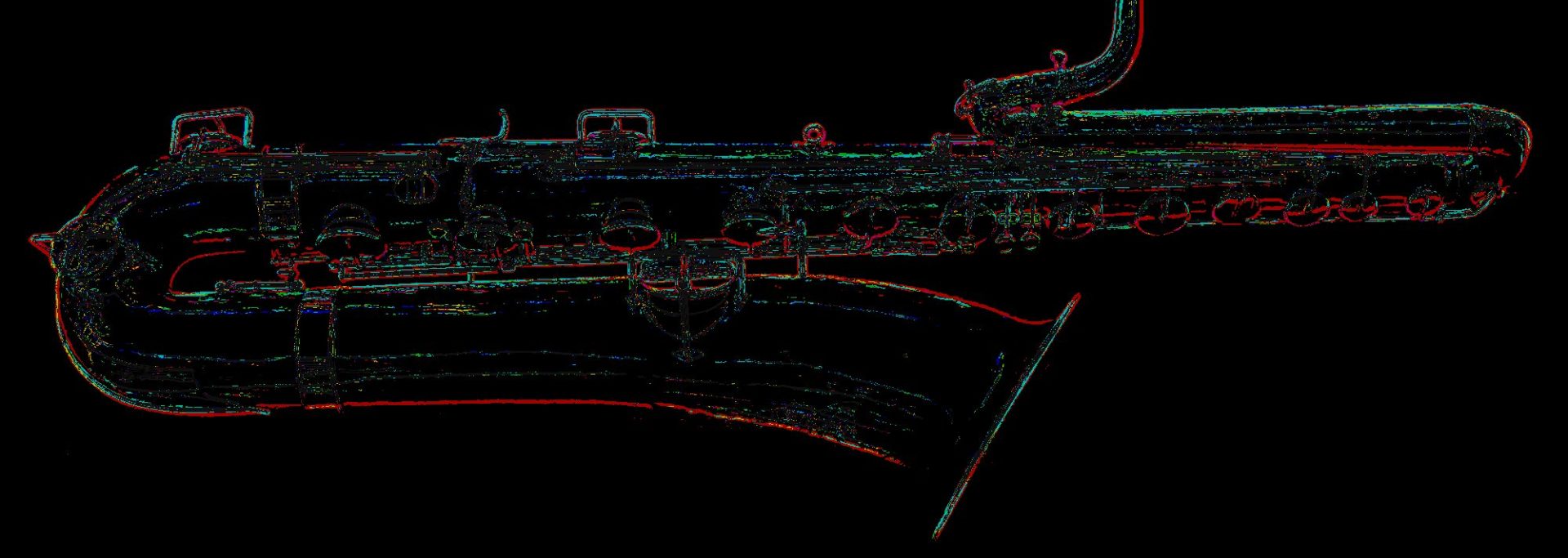Just add water, and you too could have your own Seahorse Sax.
Yesterday, as I was doing some research on the Canadian company SeaWind Musical Instruments (more on them in the coming days), I happened across some totally unrelated images of some seahorse saxophones.

Source: Tohmei Yamashita a.k.a. Fujiaki on behance.net
The more I looked at this image by Graphic Designer and 3D Illustrator Fujiaki, the more I remembered the Sea-Monkeys® I had as a small child.

Source: marswillsendnomore.wordpress.com
Mine, they didn’t look anything like those from the comic book ad; were not trainable; nor were they even really visible. Hell, I don’t even remember my tiny brine shrimp reproducing a first set of offspring. IIRC, my Sea-Monkey® pet experience ended in about two weeks. 🙁
But what if I could have a second chance at my childhood dream of having an underwater world filled with small sea pets? Not only that, what if those sea pets could be seahorse saxophones?
Let’s suspend reality for a minute—like we did when we were children and ordered those Sea-Monkey® kits in the mail. A seahorse sax as a pet would really be a dream come true for many a saxophone player.
Mmm… What would a fish bowl of seahorse saxophones look like? Well I suspect they might look something like this…

Source: Tohmei Yamashita a.k.a. Fujiaki on behance.net
Ah yes… I could teach them tricks like swimming in formation, and of course playing tunes like Handel’s Water Music Suite…
The questions I have include:
- What does a seahorse sax eat?
- How often do I have to change its reed?
- Do I have use synthetic reeds, because cane reeds would get water-logged?
- What is the lifespan of a seahorse sax?
- Does it reproduce? How exactly?
As a potential seahorse sax owner, these are all important questions that I would need answered before committing myself to this type of pet ownership. Fujiaki’s Creative Commons License doesn’t allow for derivative works. Otherwise you know I’d be creating an ad for them. 😈




seahorse saxophones… why are their mouthpieces ALWAYS upside down?
I think we should be told
Hi Jim. Welcome to my site.
I don’t know why people who don’t play sax seem to get the mouthpiece upside down more than 50% of the time. They’ve got a 50/50 chance of getting it right, yet more often than not they get it wrong. What’s up with that anyway? :scratch: :wtf:
As for these photos, I don’t know which way the mouthpiece was to begin with, but aesthetically it looks good this way. I’m not sure what technique Tohmei Yamashita used in Photoshop to curve the necks, but it looks to me like the mouthpieces might have been right side up to begin with.
If I’m not mistaken, the saxophone model that he used is similar to the one that I have. Notice in mine the mouthpiece is correctly positioned. I suspect in the one Yamashita used, it was as well.
The Seahorse saxes notwithstanding, I totally agree with you. Upside down mouthpieces on saxophones is a pet peeve of mine.